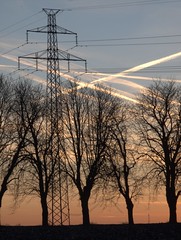The typical picture of Washington currently is that democrats say yes, republicans say no, and vice versa. What then if I were to tell you of a government reform that inspired the exact opposite, an Obama administration proposed reform that had states painted both red and blue competing for federal funds, while taking the reform of an antiquated and failing system seriously? You would most likely point me to a calendar and tell me that the fifties are over, and I would merely show you the Race to the Top.
The Race to the Top program was a product of the American Recovery and Reinvestment Act of 2009 (ARRA), commonly known as the Stimulus Bill. It provided $4.35 billion dollars in federal funding for states’ education systems. However, this was not a simple funding provision, but a competitive grant program. States would compete against each other for these funds by engaging in education reform.[1]For many, the results were somewhat muddled, with different groups focusing on different aspects of education. Regardless the perceived inadequacies of the program, it did accomplish two things: it caused states to recognize and evaluate failures in their education systems, formulating ways to fix them, while also injecting much needed funds into school systems that were facing dire budget cuts and setbacks. As I previously said, the actual results of the program are still hard gauge and likely will not be quantifiable for years to come. That being said, admission of a problem is always the first step to recovery.
With that notion in mind, we can no longer ignore America’s crumbling infrastructure. This is a subject that I have touched on in the past and which many of us notice on our commutes to and from work every day. As I stated in my November 27th post, America needs roughly $2.2 trillion dollars in infrastructure investments.[2] The need for these investments could not come at a more opportune or inopportune time. As of December 2012, the unemployment rate stands at 7.8%.[3] Any infrastructure project would be beneficial to increasing employment, not only through the jobs required to complete the task, but also through the multiplier effect. While government infrastructure projects are typically, and sometimes rightfully so, decried as pork-barrel projects, their economic benefit greatly exceeds the majority of government spending. A report from the fall of last year found that, “each dollar of infrastructure spending increases the GSP by at least two dollars”, and furthermore, “that the multiplier increases during a downturn. Leduc and Wilson found that the multiplier in the wake of the 2009 stimulus was ‘roughly four times’ more than average. That means infrastructure investments offer more value during busts than booms, which should encourage policymakers attempting to counteract high unemployment in the construction sector by increasing spending on highways, roads, and bridges”.[4] However, Washington is driving with its eyes not fixed on the road at the moment, but instead on the debt ceiling crashing through the skies.
The debt ceiling is typically raised by Congress every few years, but over the course of the Obama administration, it has become a partisan sticking point. A majority of America agrees that not raising the debt ceiling is liable to cause economic damage to the United States, but many people are more divided on which outcome is the best, with, “39 percent of [AP-Gfk] poll respondents support[ing] the insistence by House Speaker John Boehner, R-Ohio, and Senate Minority Leader Mitch McConnell, R-Ky., that deep spending cuts be attached to any measure increasing the debt ceiling. That is more than the 30 percent who back Obama’s demand that borrowing authority be raised quickly and not entwined with a bitter fight over trimming the budget. An additional 21 percent oppose boosting the debt ceiling at all”.[5] Not surprising, the survey goes on to find that the two top issues for Americans are the economy and the federal deficit. The point to take away from this is that the great recession is still firmly locked into the minds of many Americans and that we are not likely to see any significant spending comparable to what our infrastructure actually needs. As such, if we are not going to be able to spend more to dig out of this hole, then we have to spend wiser, and there is no better way to get the best ideas then through competition.
We have in this possibility an intersection of resounding truths: America’s infrastructure is in desperate need of repair, the health of the economy is seen as still in balance, and the concern for the federal deficit will likely curtail spending increases. We’ve already shown that infrastructure investments are one of the most efficient ways that the government can spend. With our constrained ability to spend, but a desire for a healthier economy, we must choose the investment with the greatest track record for success. By making it into a competition in the spirit of the Race to The Top, we are increasing the economic benefit of the spending even more. By cutting out the pork, we are targeting the projects and the plans that would be the most beneficial, the best of the best, one could say. Furthermore, it has been noted that in downturns that the multiplier effect is even more resounding. While the recession may be officially over, unemployment remains high. When we break unemployment down by state, we see states like Mississippi (8.5%), New Jersey (9.6%), and California (9.8%) with unemployment levels well above the national average.[6] What you will also find in these states are infrastructures with extremely low ratings that are in need of drastic improvements. [7] The recession may have ended but for many of these states the wounds have yet to heal. An increase in infrastructure spending would provide a much needed injection of cash into their economies and likely a multiplier effect above the average.
Inspirations for new investments are appearing in the news every day, most recently out of the Netherlands. While we are attempting to get our infrastructure to meet the standards of the modern day, this nation already is planning and getting set to build the needed infrastructure of the future. Construction is set to begin soon on glow in the dark highways, “treated with a special ‘foto-luminising powder’ that is charged up during the day and illuminates the contours of the road and lane markers at night for up to 10 hours… [And] dynamic paint [that] responds to changes in temperature. A pattern of snowflakes, for example, appears when it is cold and slippery… [While] other innovations to debut in the coming years include an induction priority lane that will charge electric cars as they drive, presumably via induction coils that are powered by wind”.[8] State and national leaders would also be wise to take note of the success of the Dutch bike system, with, “ 27 percent of all daily trips [being] made by bicycle”.[9] In all likelihood America faces a tough road ahead, torn by somewhat contradictory desires and opinions. Nonetheless, we still possess the capability to determine the difficulty of that road ahead. We can determine this by being smart, spending smart, and letting the spirit of competition drive us down the best road. Creating a competitive program to improve the nation’s infrastructure indeed is a way to live green and be green.
By Sean P. Maguire
[1] http://www2.ed.gov/programs/racetothetop/executive-summary.pdf
[2] http://www.infrastructurereportcard.org/
[3]http://www.bls.gov/cps/home.htm
[4] http://www.businessinsider.com/infrastructure-economic-multiplier-2012-11
[5] http://www.huffingtonpost.com/2013/01/17/debt-limit-poll_n_2498441.html
[6] http://www.bls.gov/web/laus/laumstrk.htm
[7] http://www.asce.org/Infrastructure/Report-Card/State-and-Local-Report-Cards/
[8] http://www.nbcnews.com/technology/futureoftech/futuristic-highway-glows-dark-reports-weather-1C6670949
[9]http://www.yesmagazine.org/planet/how-to-make-biking-mainstream-lessons-from-the-dutch




